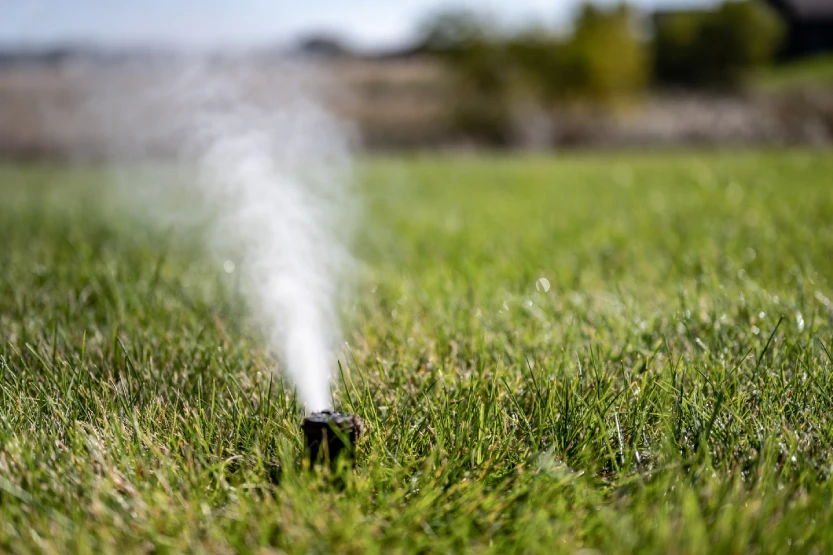This fall irrigation shutdown checklist outlines exactly how to protect your sprinkler system from freezing temperatures in Omaha, NE. It covers all four key phases-preparation, system shutdown, water drainage, and final checks-so you can winterize properly based on whether you have a manual drain, automatic drain, or require a professional blow-out. For expert help, schedule service with Quality Irrigation today.
Phase 1: Preparation
This step gets your irrigation system ready for winterization. It involves gathering tools and removing parts that could be damaged by freezing temperatures.
Gather Materials
Start by collecting the necessary tools:
- Air compressor (for blow-out method)
- Air compressor coupling
- Wrenches
- Foam pipe insulation or tape
Remove Above-Ground Parts
- Disconnect and drain hose-end timers, filters, and backflow preventers.
- If possible, store these components indoors for the winter.
- Clear debris from sprinkler heads and access points.
Phase 2: System Shutdown
Once your tools are ready, it’s time to shut off the water and power to the system. This prevents accidental activation and eliminates the source of water that could freeze in the pipes.
Shut Off the Water Supply
- Locate and turn off the main water valve for your irrigation system. It’s often in a basement, crawl space, or box near your water meter.
Turn Off the Controller
- Put the irrigation controller into “off” or “rain” mode.
- This prevents the system from turning on during winter and causing damage.
Phase 3: Draining the Water
All water must be removed to prevent pipe bursts or component cracks. In areas with hard freezes like Omaha, the blow-out method is highly recommended and may be required to maintain warranty coverage.
Method 1: Manual Drain
- Locate manual drain valves at the system’s low points.
- Open one valve at a time to release water, then close once drained.
- Open the main drain on the backflow device to let any trapped water escape.
Method 2: Automatic Drain
- Some systems include automatic drain valves that open when the water supply is shut off.
- Walk your system to confirm water has drained and check for leaks or pooling.
Method 3: Blow-Out (Recommended for Cold Climates)
- Connect an air compressor to the blow-out port downstream of the backflow preventer. Never push air through the backflow device.
- Set compressor pressure to under 50 psi for polyethylene or under 80 psi for PVC lines.
- Begin with the zone farthest from the compressor and activate it through the controller.
- Let it run until only a fine mist appears.
- For larger systems, use multiple short cycles per zone instead of one long cycle.
- Once all zones are clear, shut off and disconnect the compressor.
Pro Tip: Blow-outs are best handled by professionals with the right tools and experience.
Phase 4: Final Checks
After draining your system, these last steps ensure everything is protected and no water remains in critical components. Insulation and proper storage are key to preventing winter damage.
Drain the Backflow Preventer
- Rotate both ball valves to a 45-degree angle to allow any remaining water to drain and avoid freezing.
Insulate Exposed Parts
- Use foam covers or insulation tape to wrap exposed valves, pipes, and backflow components.
Secure All Connections
- Cover the blow-out port or thread the cap back on loosely for drainage.
- Avoid sealing tightly to prevent trapped moisture.
Store Accessories
- Remove and store hoses, timers, and sprinkler heads in a dry, warm location.
Don’t Wait – Schedule Your Professional Winterization
A properly winterized sprinkler system saves money, prevents damage, and protects your investment. At Quality Irrigation, we provide full inspections, blow-outs, and backflow services to prepare your system for freezing temperatures in Omaha, NE.Call 402‑672‑9297 or request service online before Omaha’s first freeze, which typically hits in October. We serve Omaha, Gretna, Springfield, Papillion, La Vista, Ralston, and nearby Nebraska communities.
